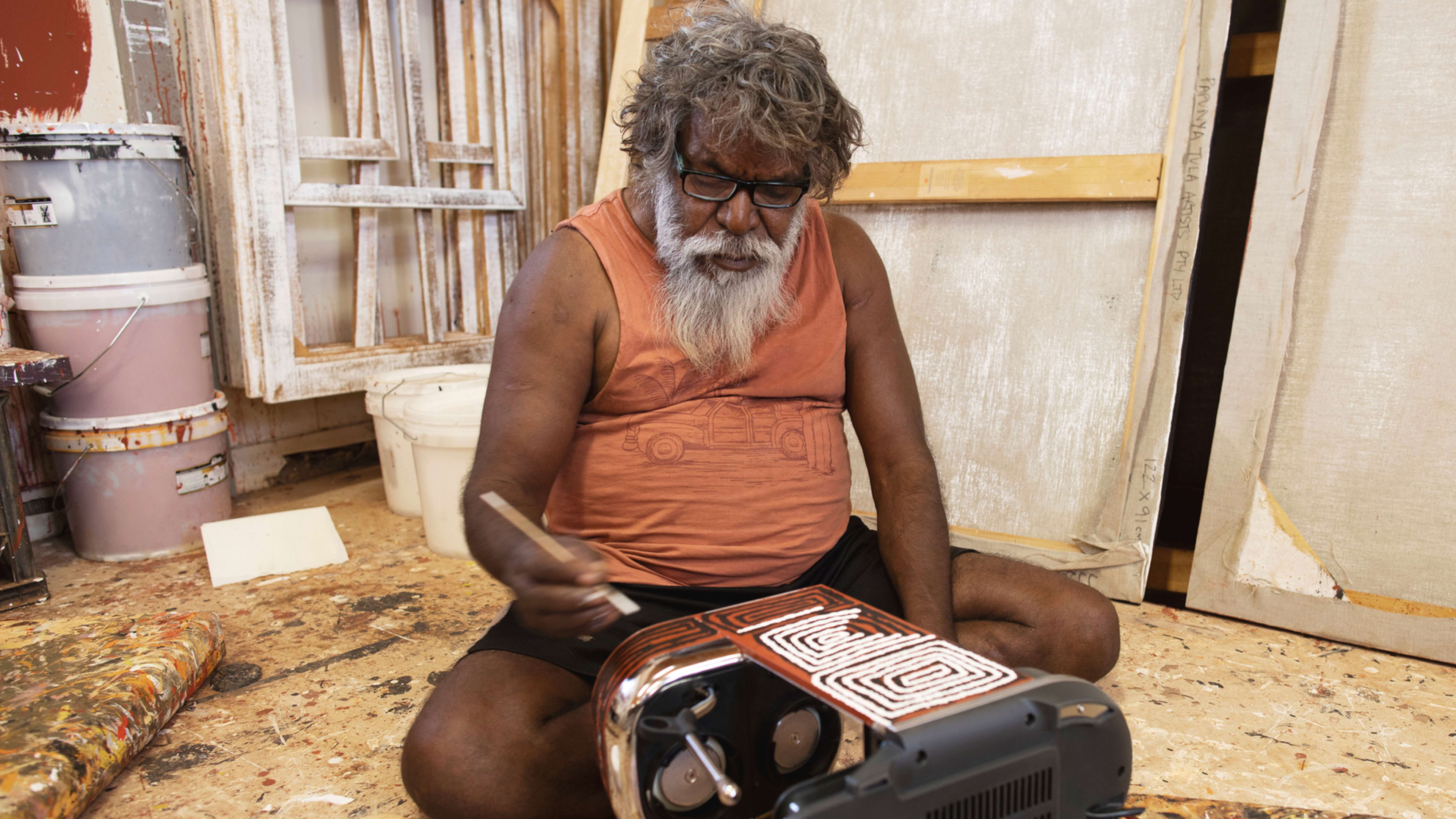There’s a necessary tension that hangs over any corporate product involving the original inhabitants of a country—a fact that’s as true in Australia as it is the United States. So when you see “Breville” and “Aboriginal Culinary Journey,” you’re right to be dubious. Alison Page, a Wadi Wadi and Walbanga member of the Yuin nation and founder of the National Aboriginal Design Agency in Australia, wanted to change the paradigm. So as curator of Breville’s new limited-edition product line of kitchen appliances designed by four prominent Aboriginal artists, she did.
“It was really important for us to treat this project as a tonic to this sickness that had kind of permeated Aboriginal design for a really long time,” she says. “Aboriginal culture had been ripped off, appropriated, stolen . . . before we were even recognized as citizens of the country.”

Breville’s Aboriginal Culinary Journey line dates back nearly 20 years, to when Page met Richard Hoare at a wedding. Hoare had just joined the high-end Australian kitchenware company as head designer, and he and Page riffed on an idea rooted in storytelling and indigenous art. It didn’t end up panning out right away, but Page says a seed was planted—and now it has germinated, resulting in a range that brings vibrant energy and life to the staid environs of our endlessly stainless steel kitchens.

The easiest part of the whole initiative was choosing the artists, Page says. “The best contemporary artists in the world come from the Western Desert.” Three of the artists—Yalti Napangati, Yukultji Napangati and Tjapaltjarri—are members of the original “Pintupi Nine,” who did not interact with the modern world until 1984. Simpson, meanwhile, is a Sydney-based artist and Yuwaalaraay woman.

The collection encompasses Yalti Napangati’s Piruwa kettle and Kampurarrpa juicer, Lucy Simpson’s Dhuuyaay oven and Dhunbarrbil toaster, Yukultji (Nolia) Napangati’s Marrapinti coffee machine, and Warlimpirrnga Tjapaltjarri’s Tingari coffee machine.

On the whole, artmaking is directly woven into the lives of Aboriginal Australians. “We do have a living culture,” Page says, “so when other materials came into our existence, we started painting on everything.”

In the absence of written language in Aboriginal Australia, Page says objects tell their own stories—e.g., a boomerang used for hunting will feature an artistic narrative of a hunt. The same applies to cooking tools, which Aboriginal people painted, burned, and etched. Breville’s new range attempts to honor that history. While the Breville team came prepared with a surplus of blank appliances for the artists to interact with, Page says it was a “one-take wonder” as they meditatively got to work, painting directly onto the pieces. Each product contains a story—for instance, Yalti Napangati’s kettle, which depicts women preparing Piruwa tea around a watering hole, represented by the water-level window on the appliance.

The artists painted the pieces on site, but reproducing them faithfully proved to be more challenging for Breville. Page says she and Hoare spent around a year working through the technical aspects of how to imbue each appliance with the true tactile nature of the originals.

After a significant amount of trial and error, the team developed a 3D scanning process that accurately captures the texture and depth of the brushstrokes; the art is then reconstructed by hand in layers of applications, with Breville dubbing the end result indistinguishable from the original. The company has gone on to patent the technique.

The final production of 10,000 pieces, which are all individually numbered, releases in the U.S. today.
When it came to compensating the artists, Page wanted to raise the bar, so she partnered with an Aboriginal intellectual property lawyer, establishing a royalty for each item produced, with the artists retaining copyright. Moreover, “what has really blown my mind about Breville is that they’re going to donate 100% of the profits,” Page says.

Per Breville, half of the funds will be used to support the National Indigenous Culinary Institute and the Moriarty Foundation, and the other half will fund Indigenous scholarships and initiatives at the University of Technology Sydney.
“I think the motivation for Breville to do the project in the first place was about saying, ‘This is what makes Australia unique,'” Page says. “‘This is about our land.’”

Page says storytelling is key to sustainability—imbuing an object with meaning and history can help eliminate the disposability of the modern world. And to her, that’s an essential part of the project at large.
“We can use the act of design as an act of power, and say, no, we’re not going to do this anymore. We’re not going to design all these ubiquitous objects that just get thrown away. We’re going to build story and meaning and preciousness and sustainability into everything we make from now on.”
It may seem like a lofty goal, but hey—stranger things have happened. (Like, say, a major brand seeking to do right by a group of brilliant Aboriginal artists.)
Recognize your brand’s excellence by applying to this year’s Brands That Matter Awards before the early-rate deadline, May 3.
